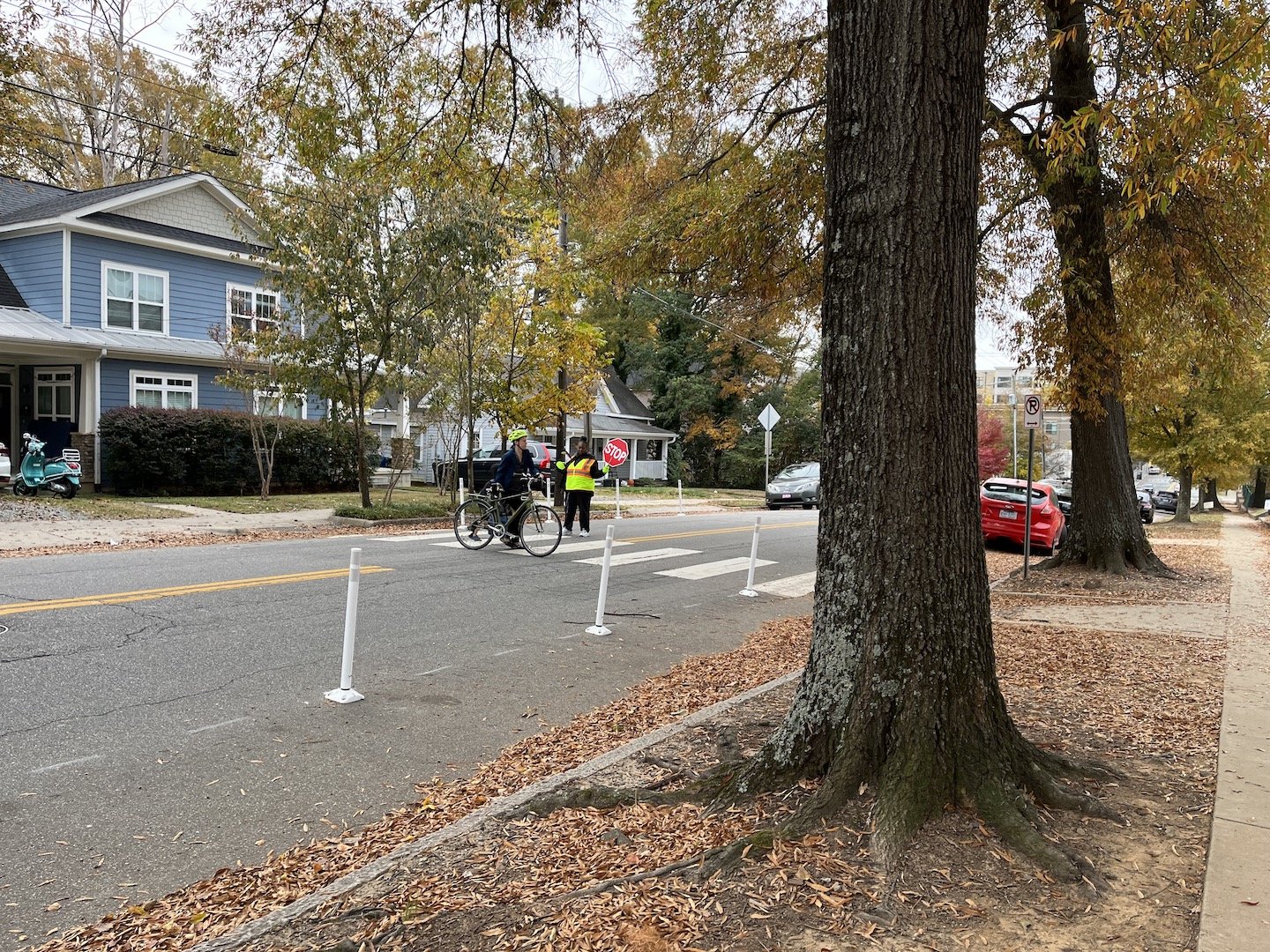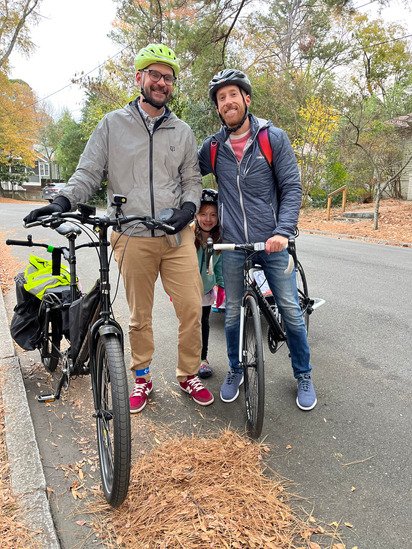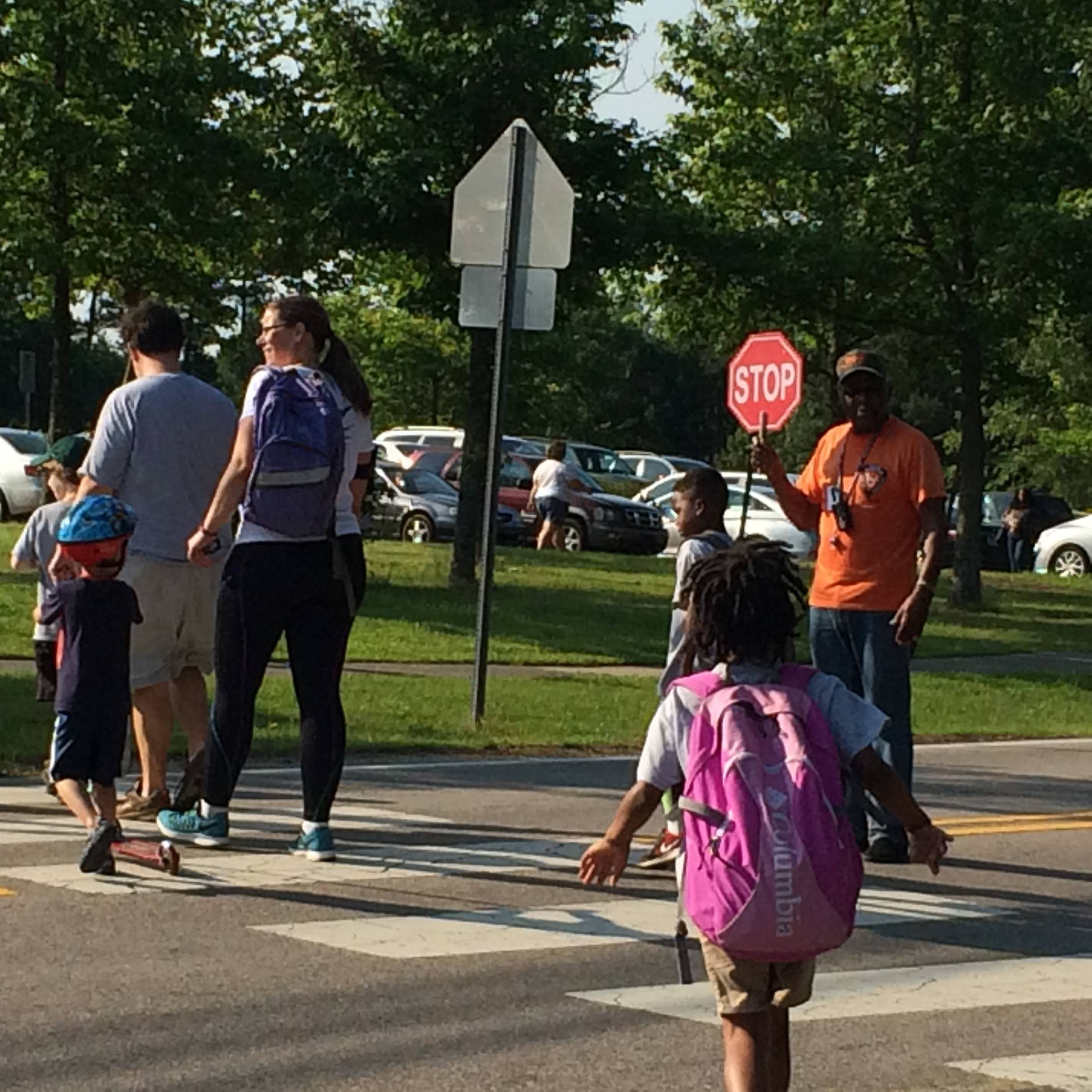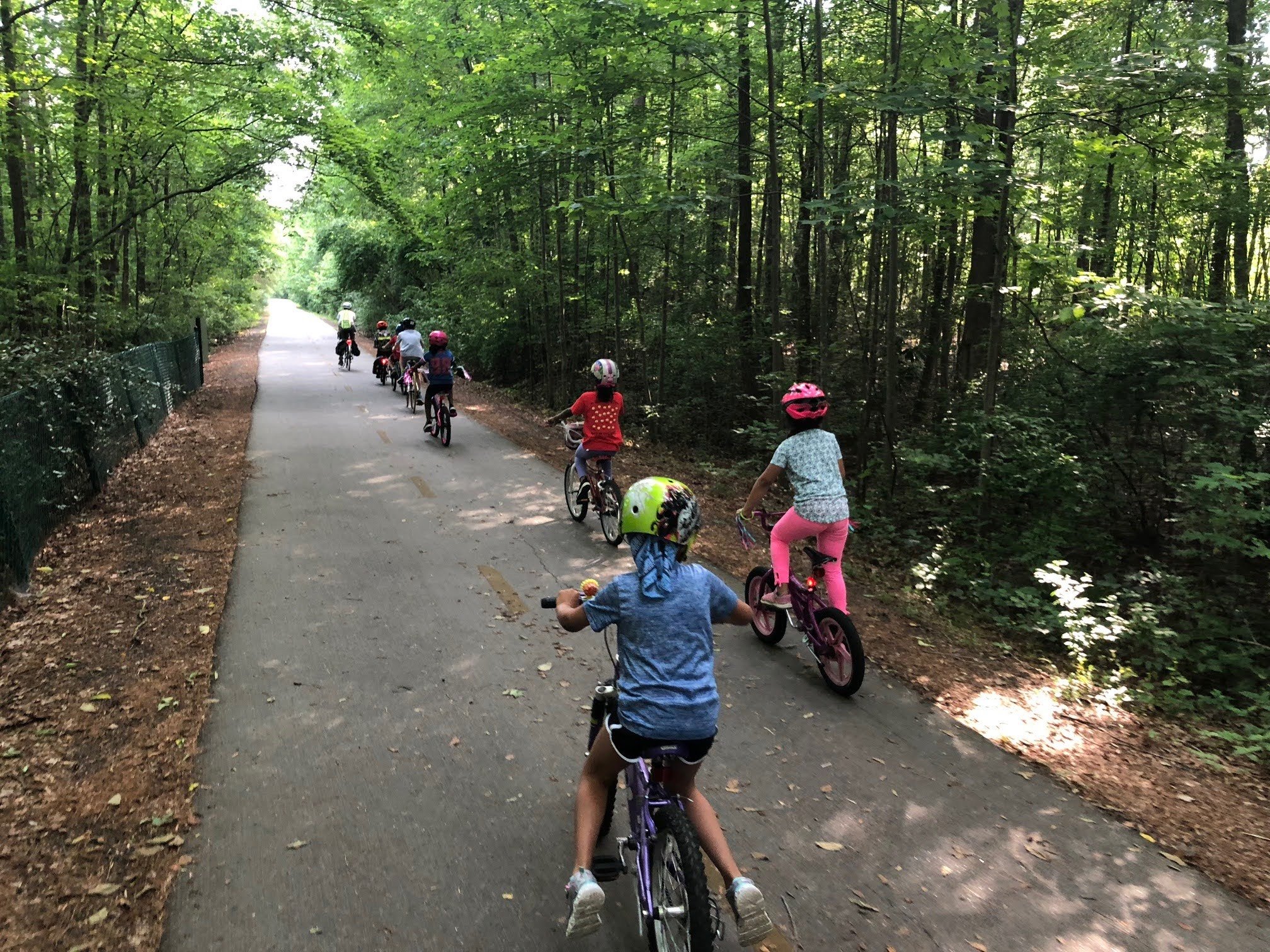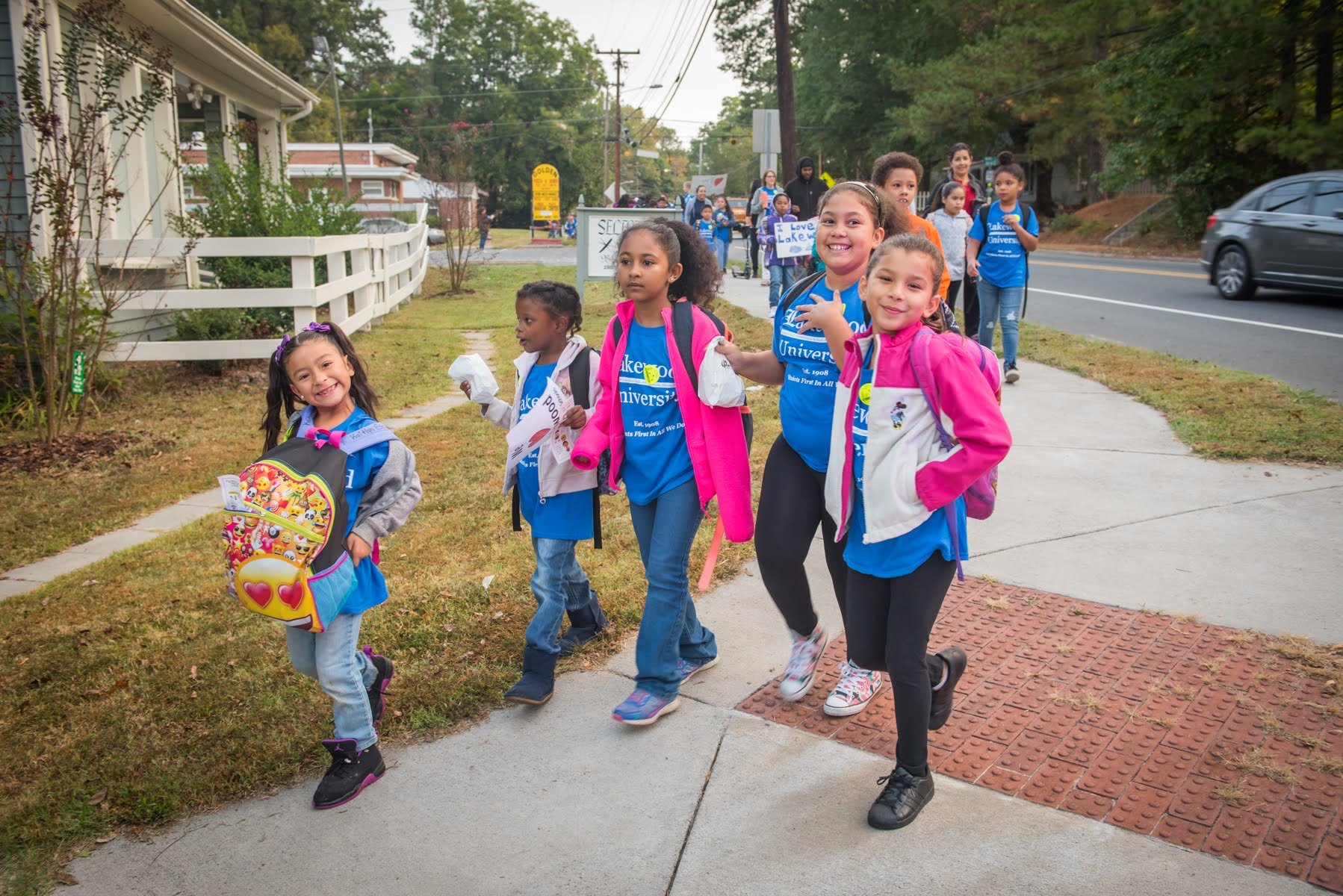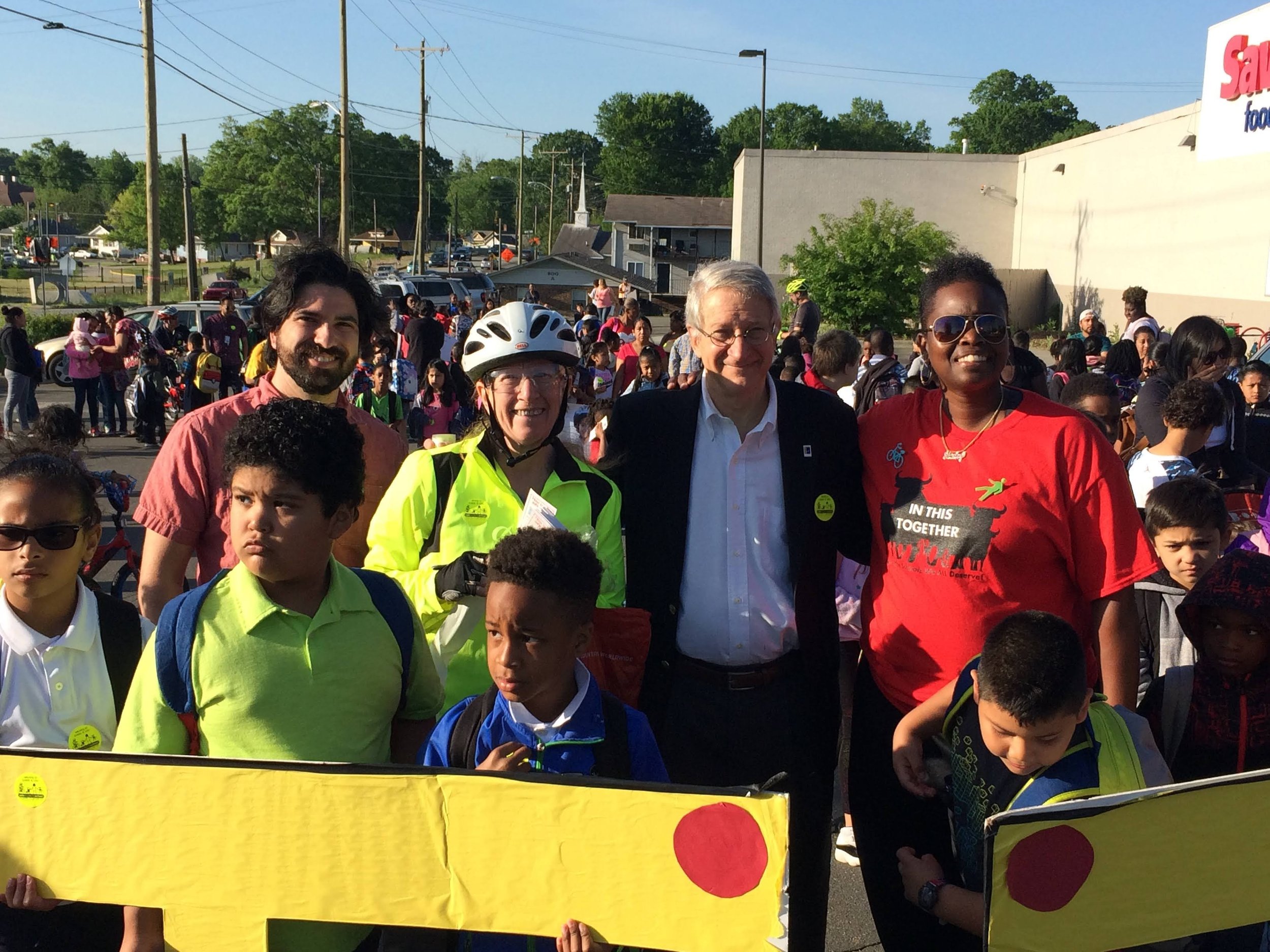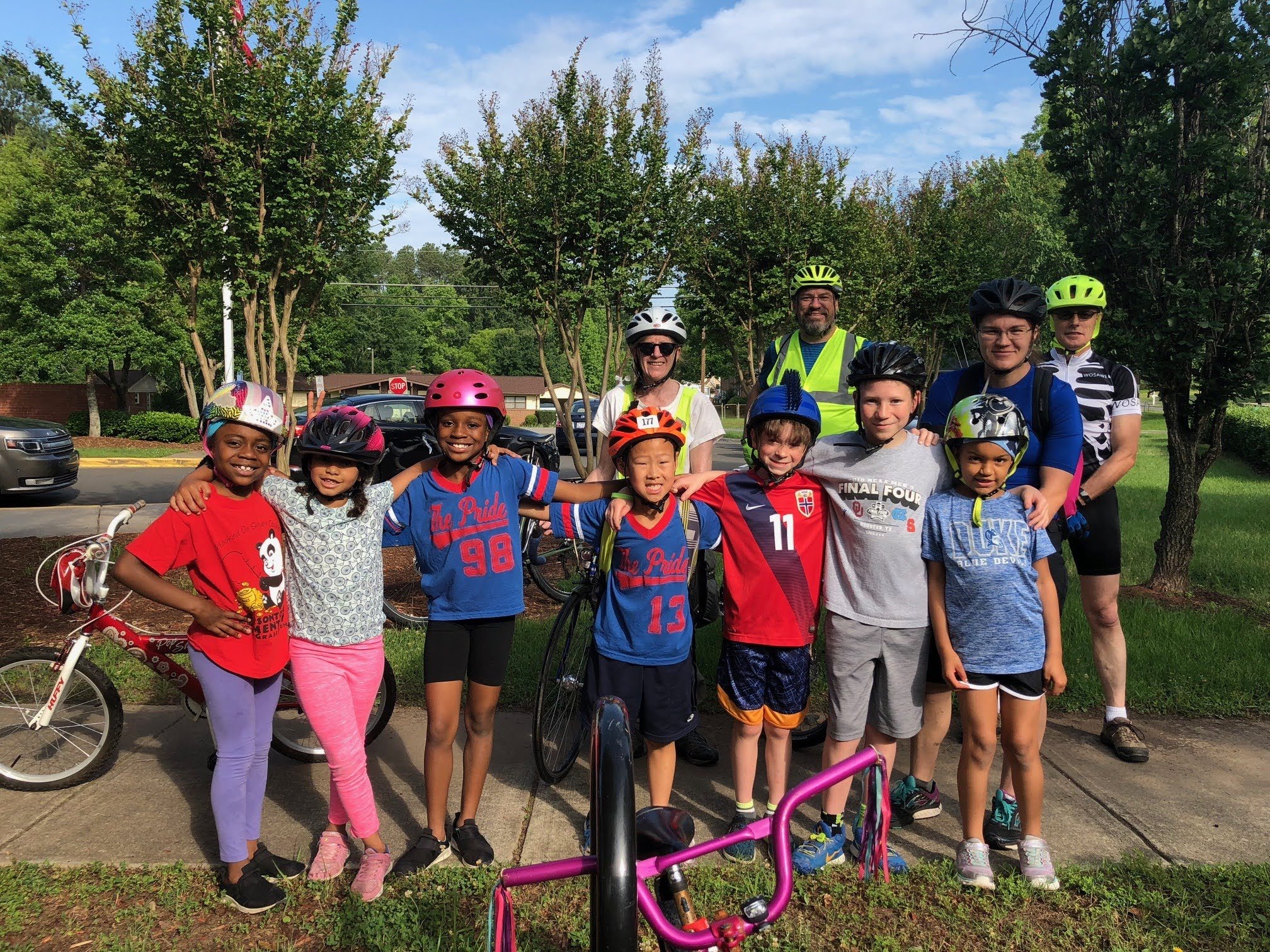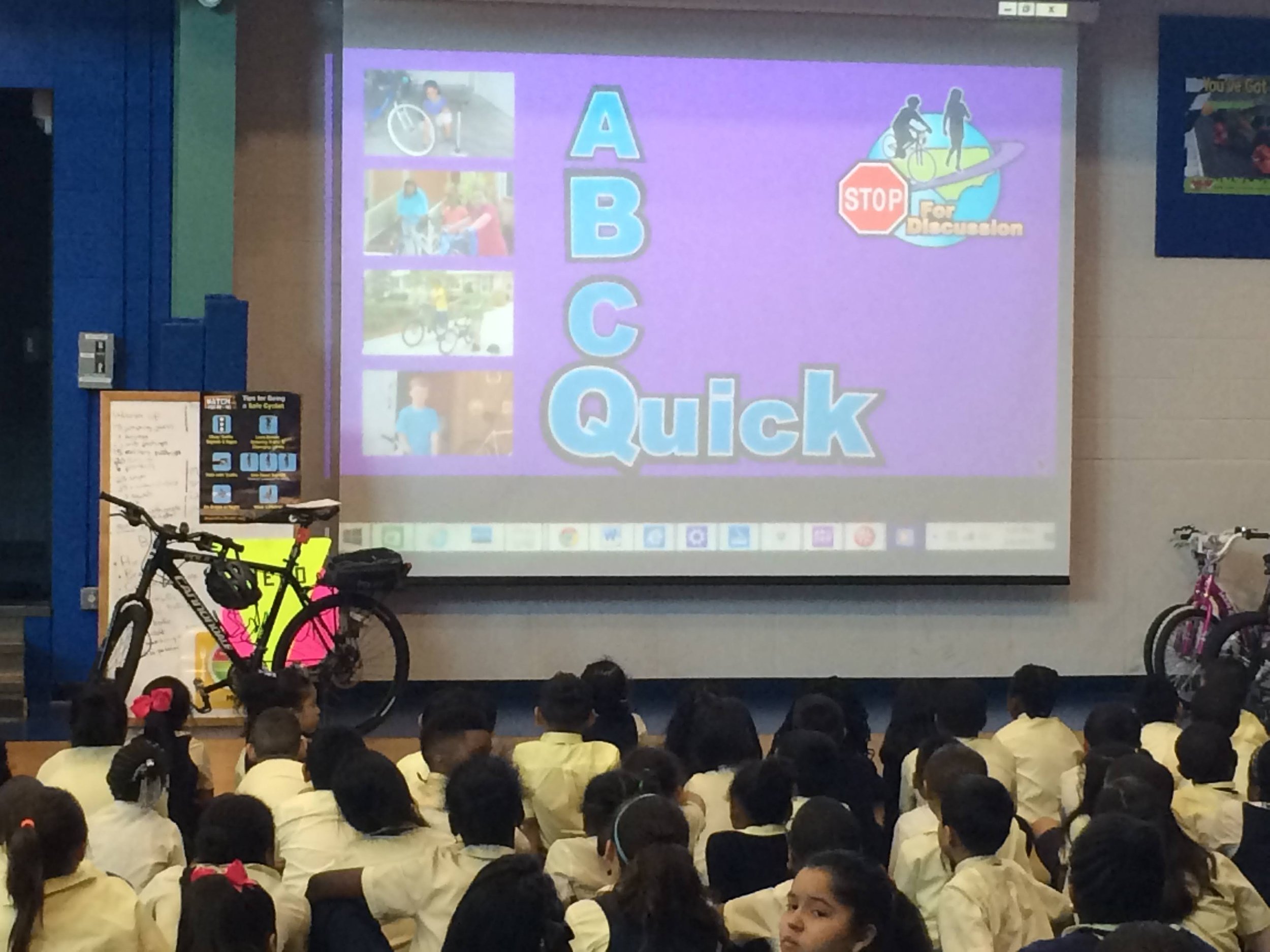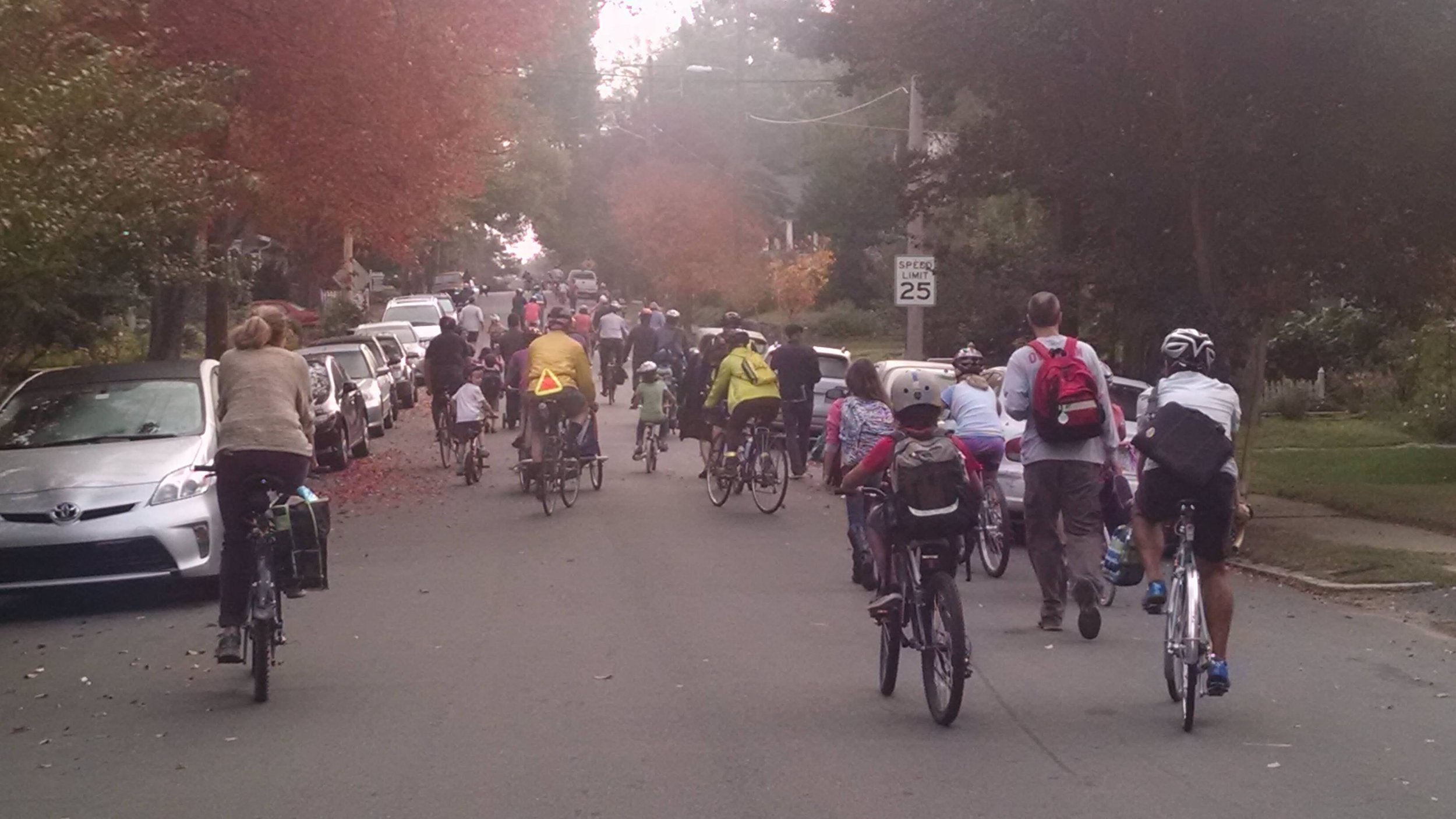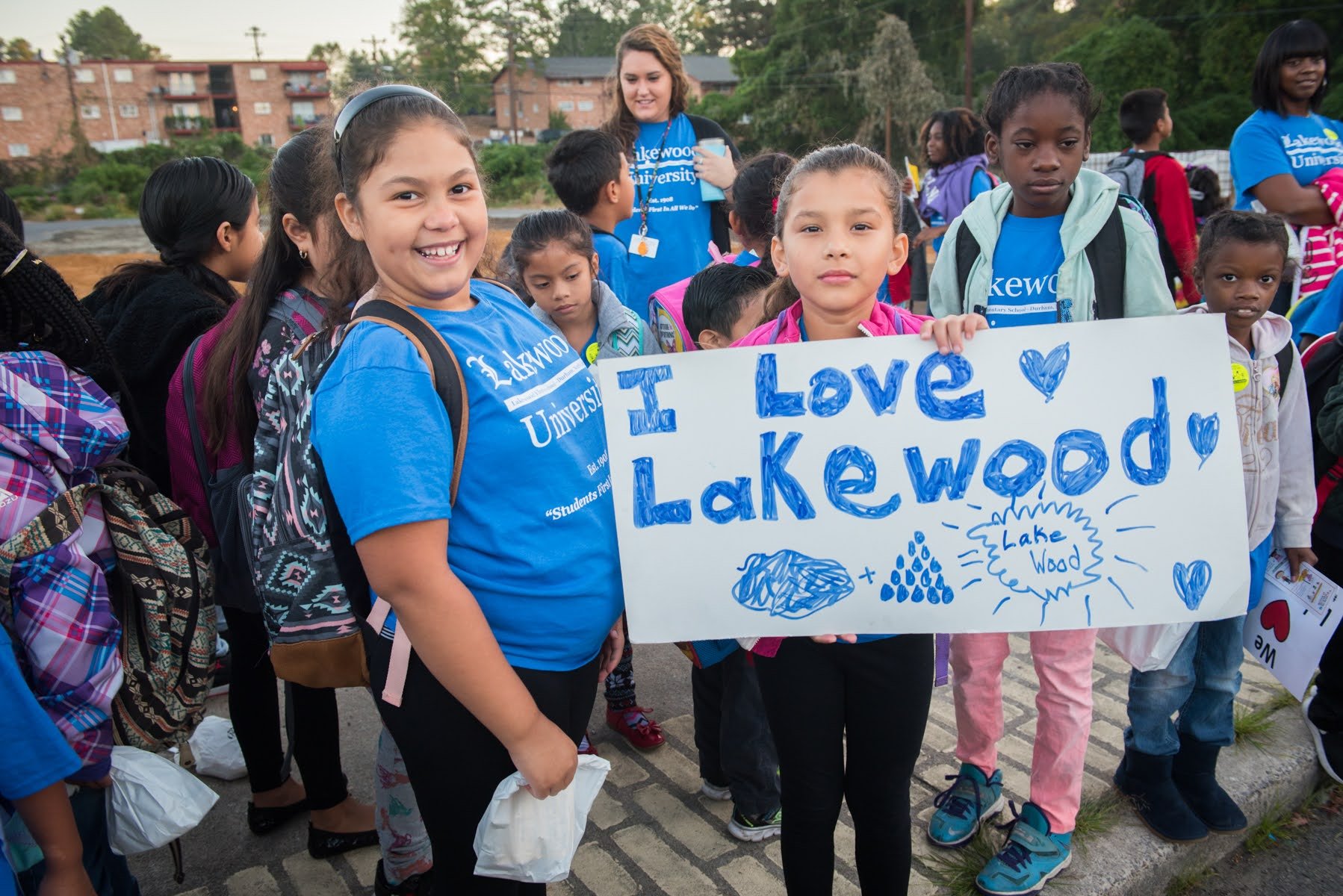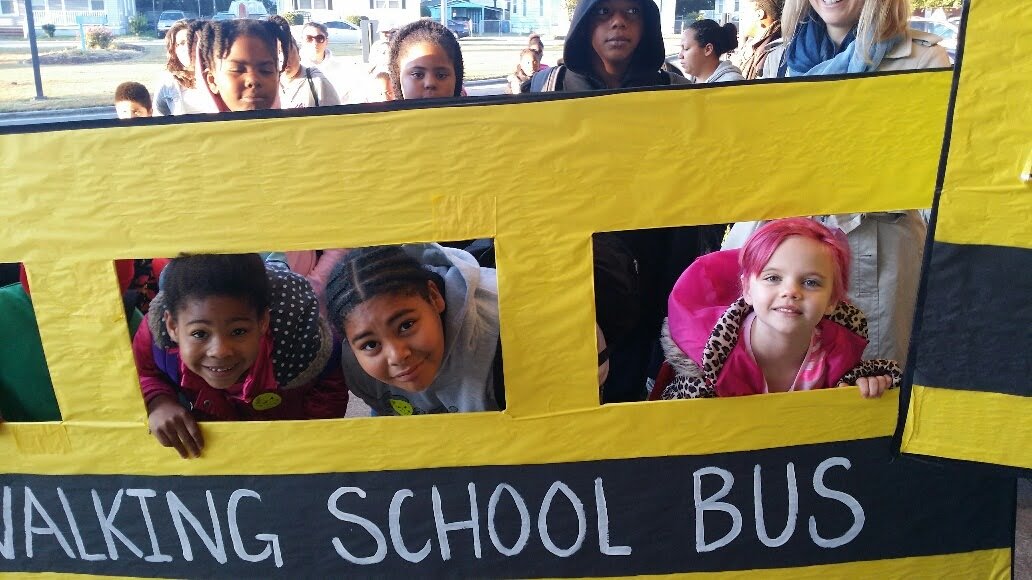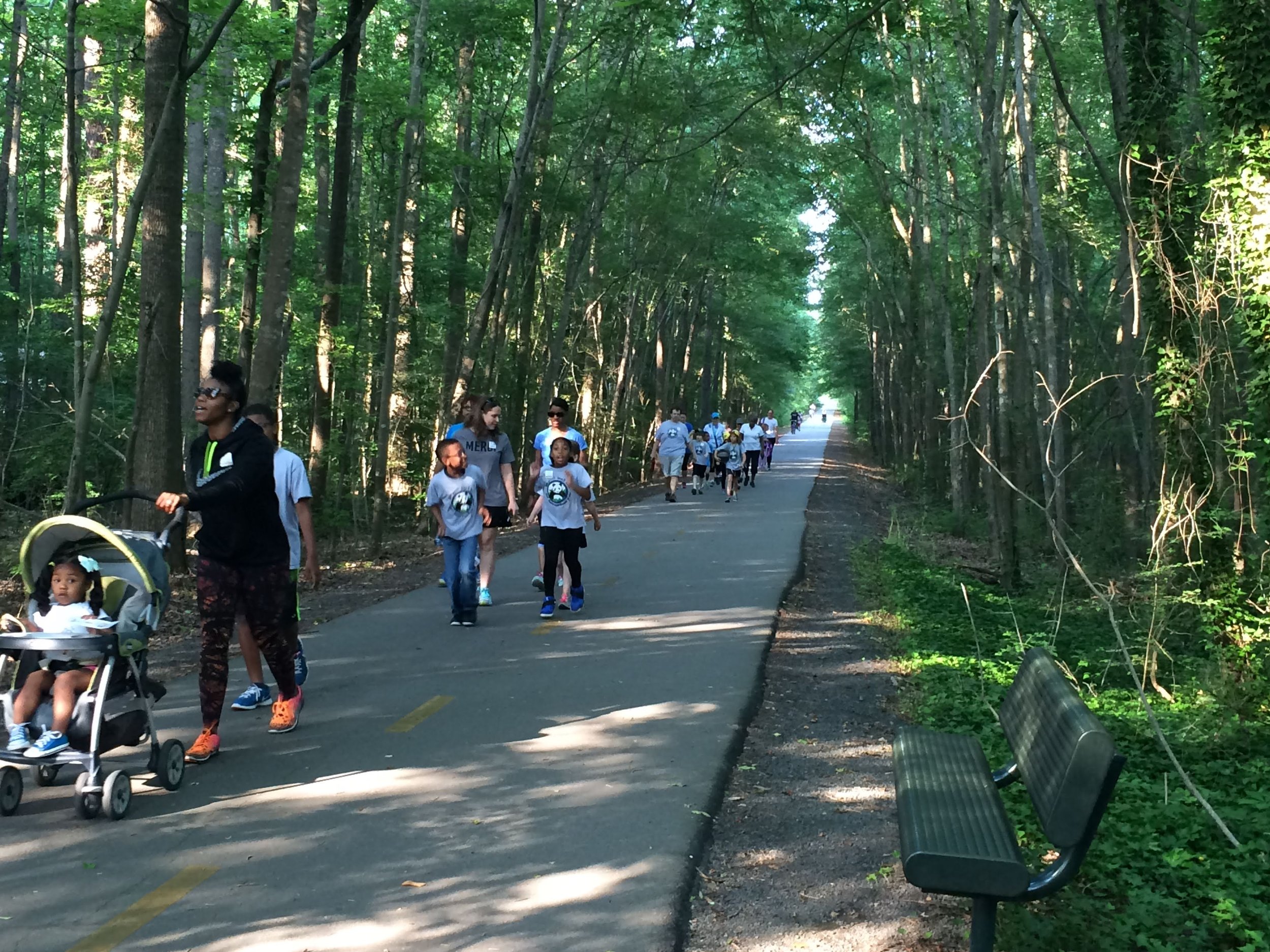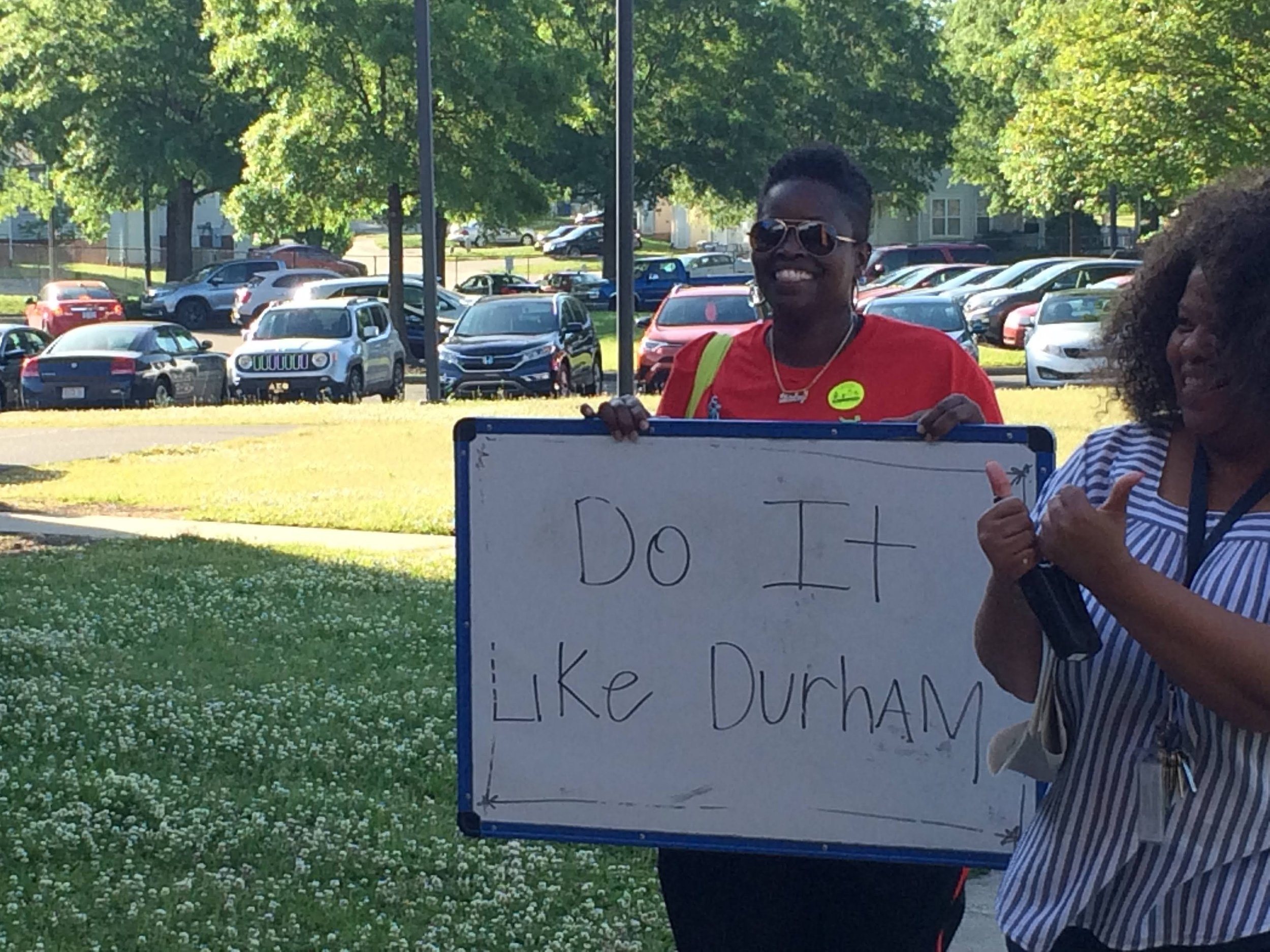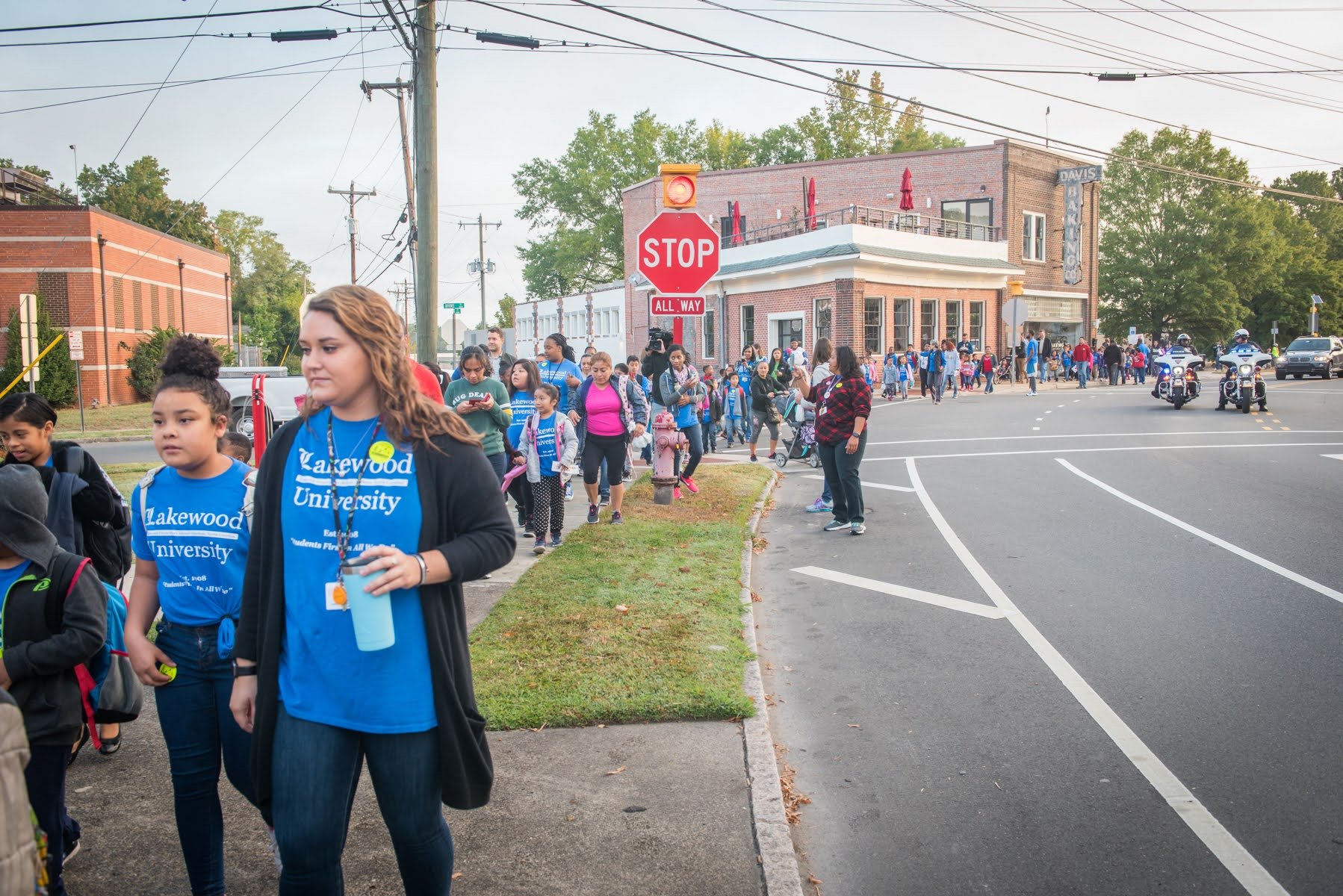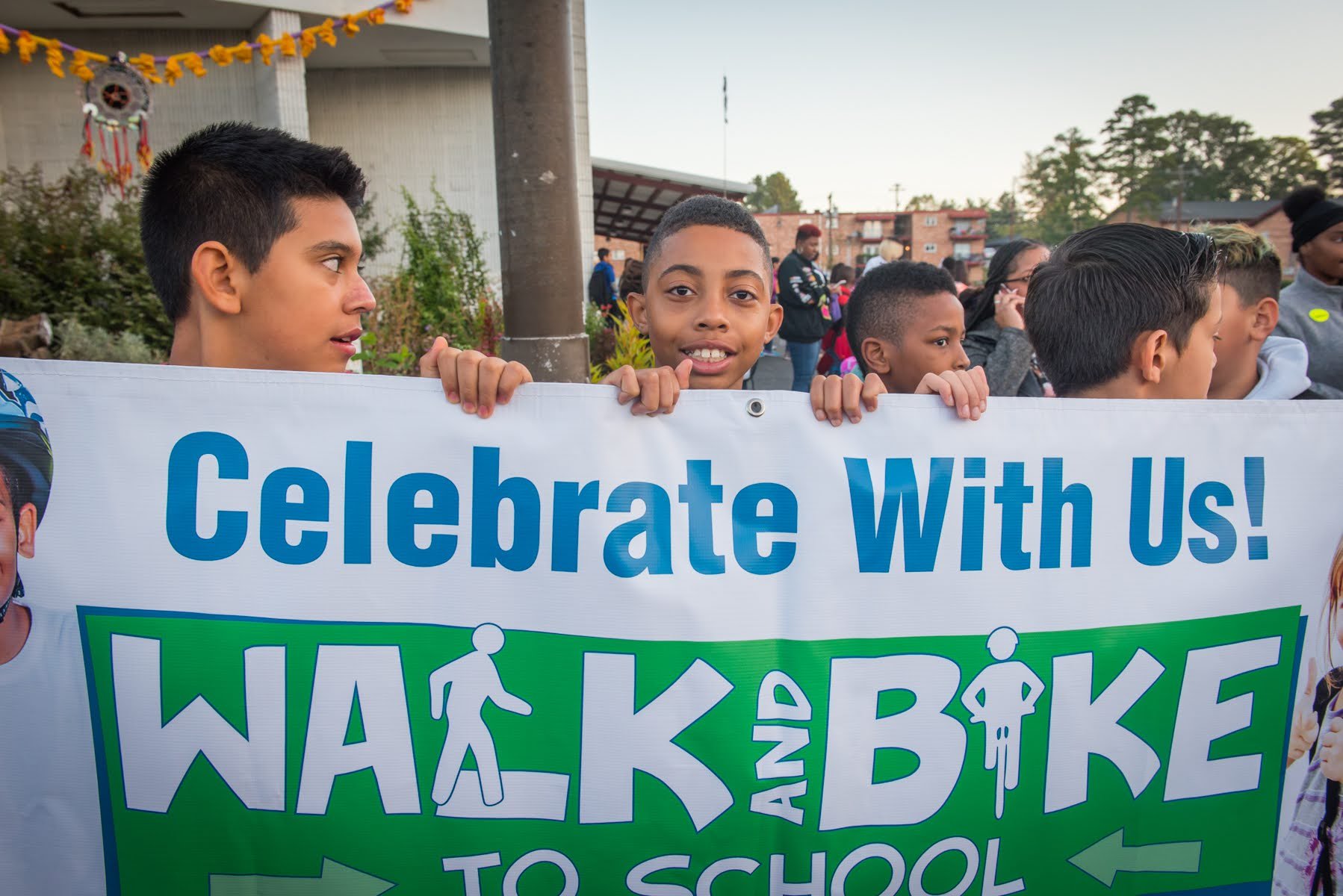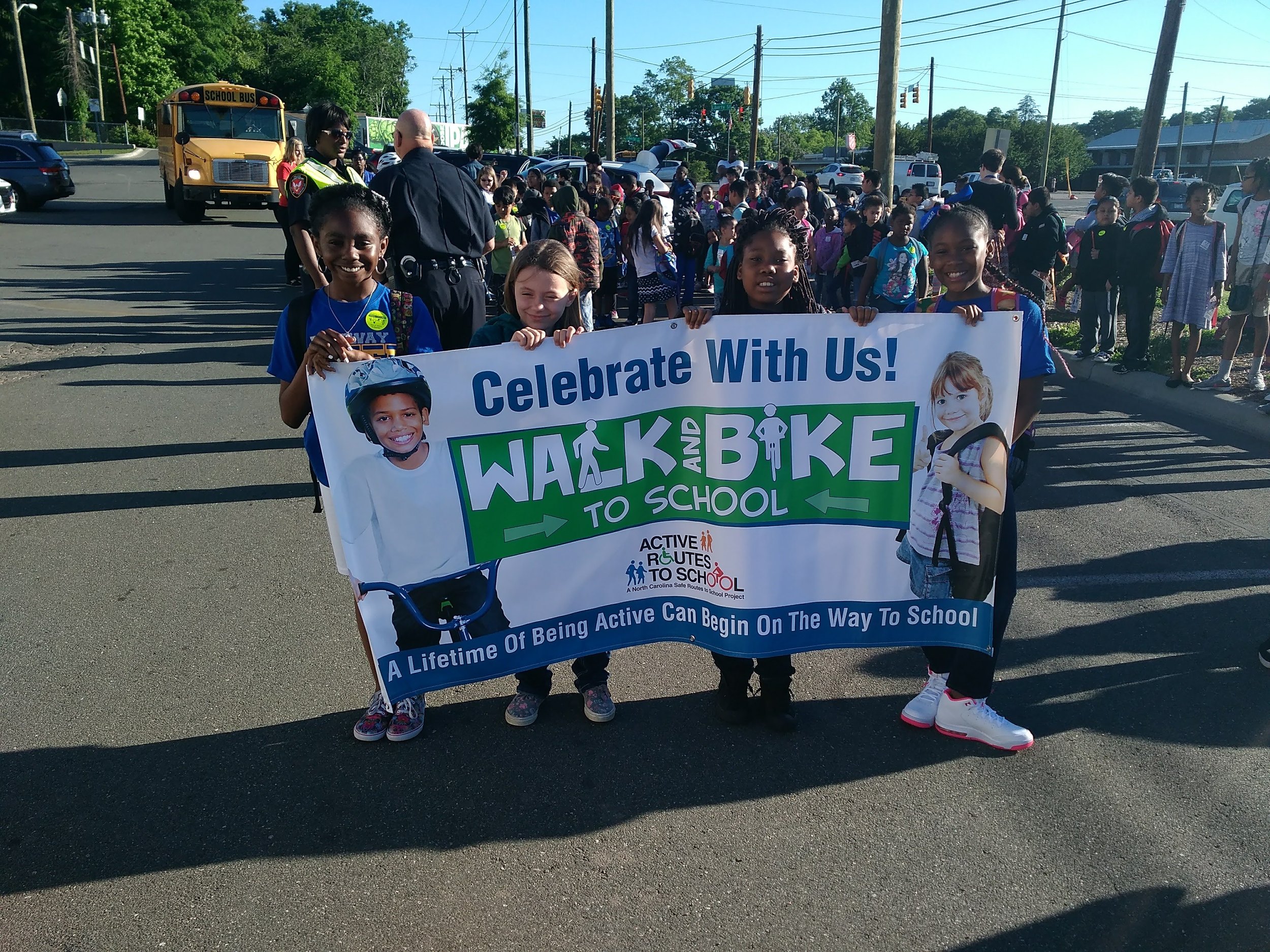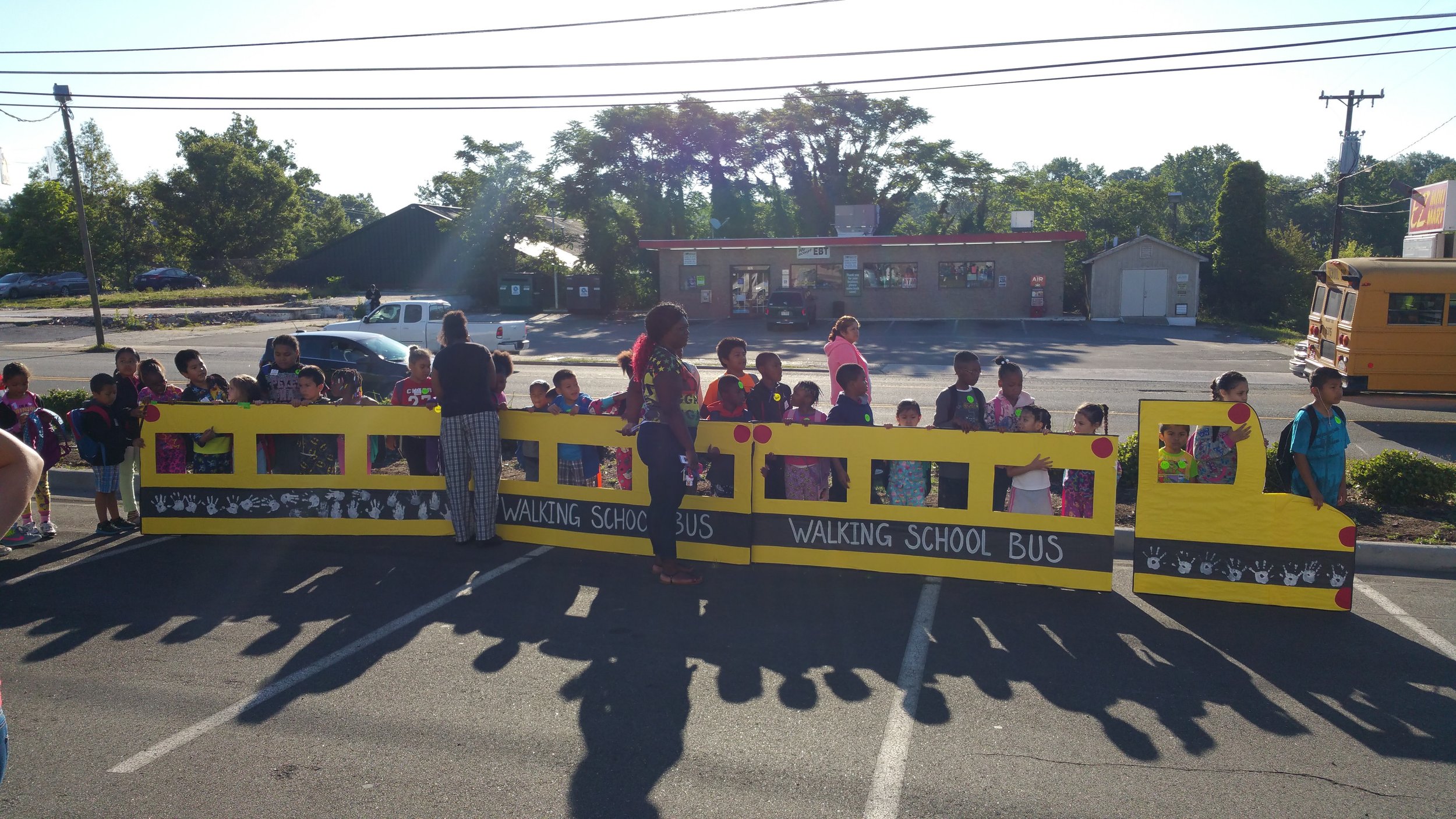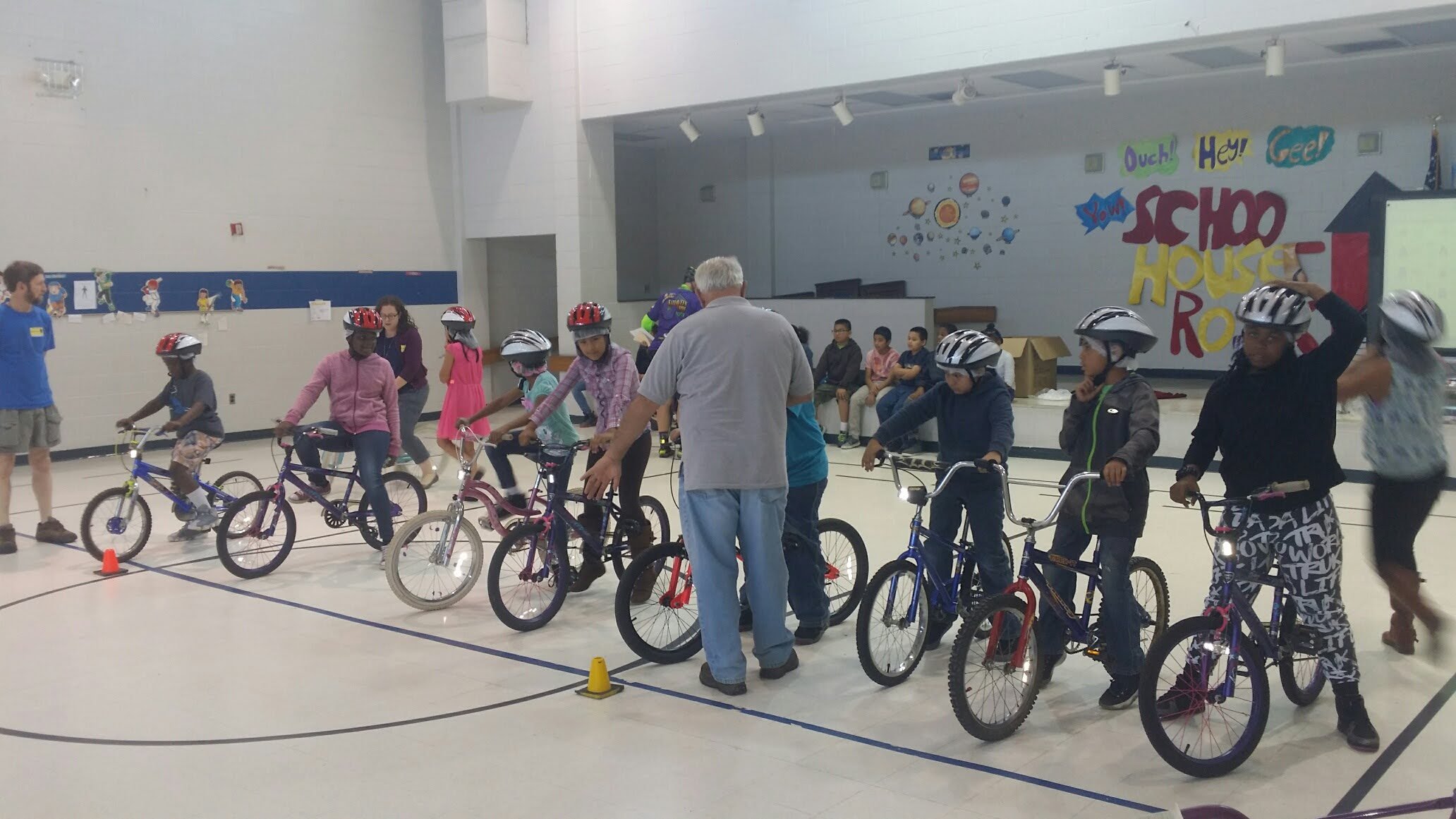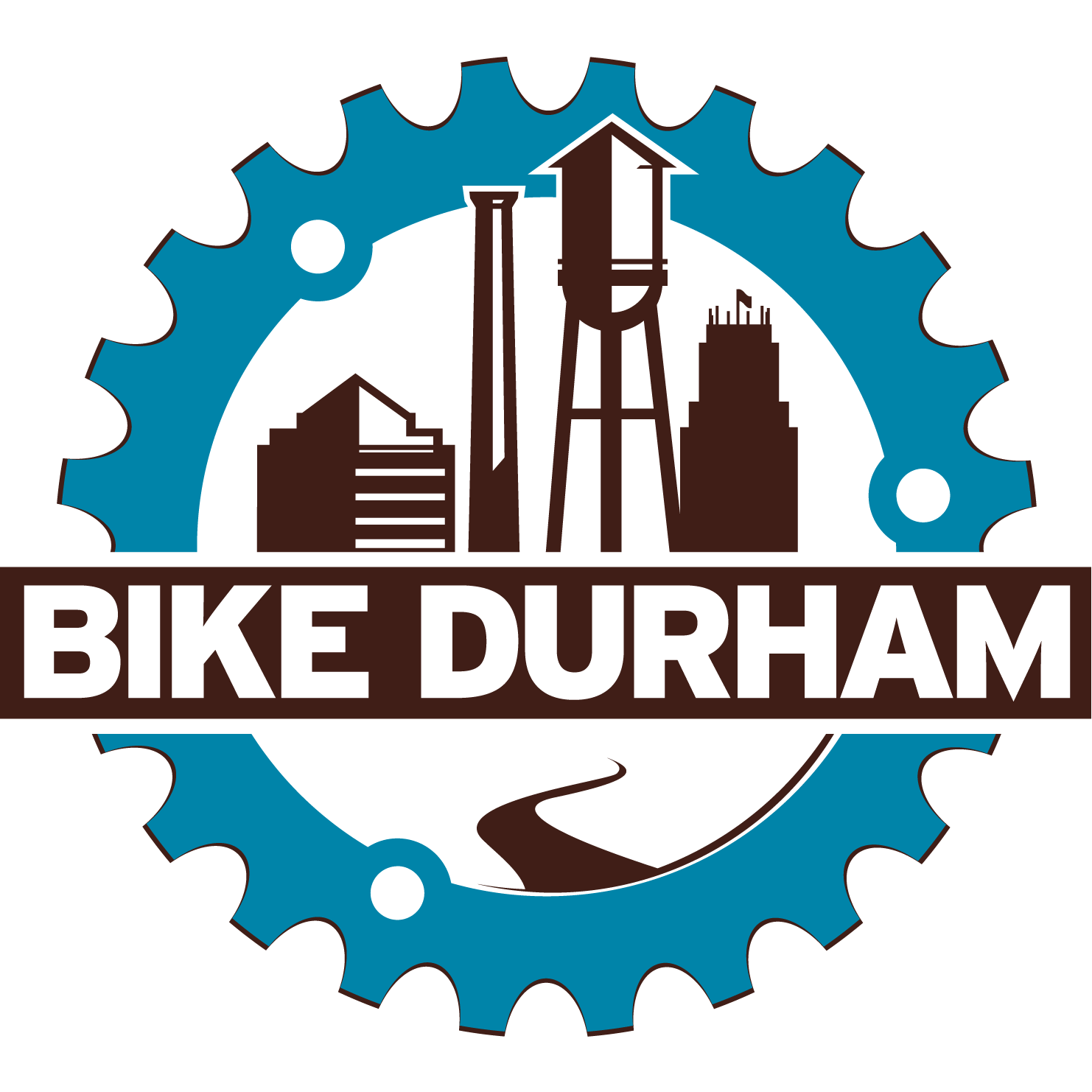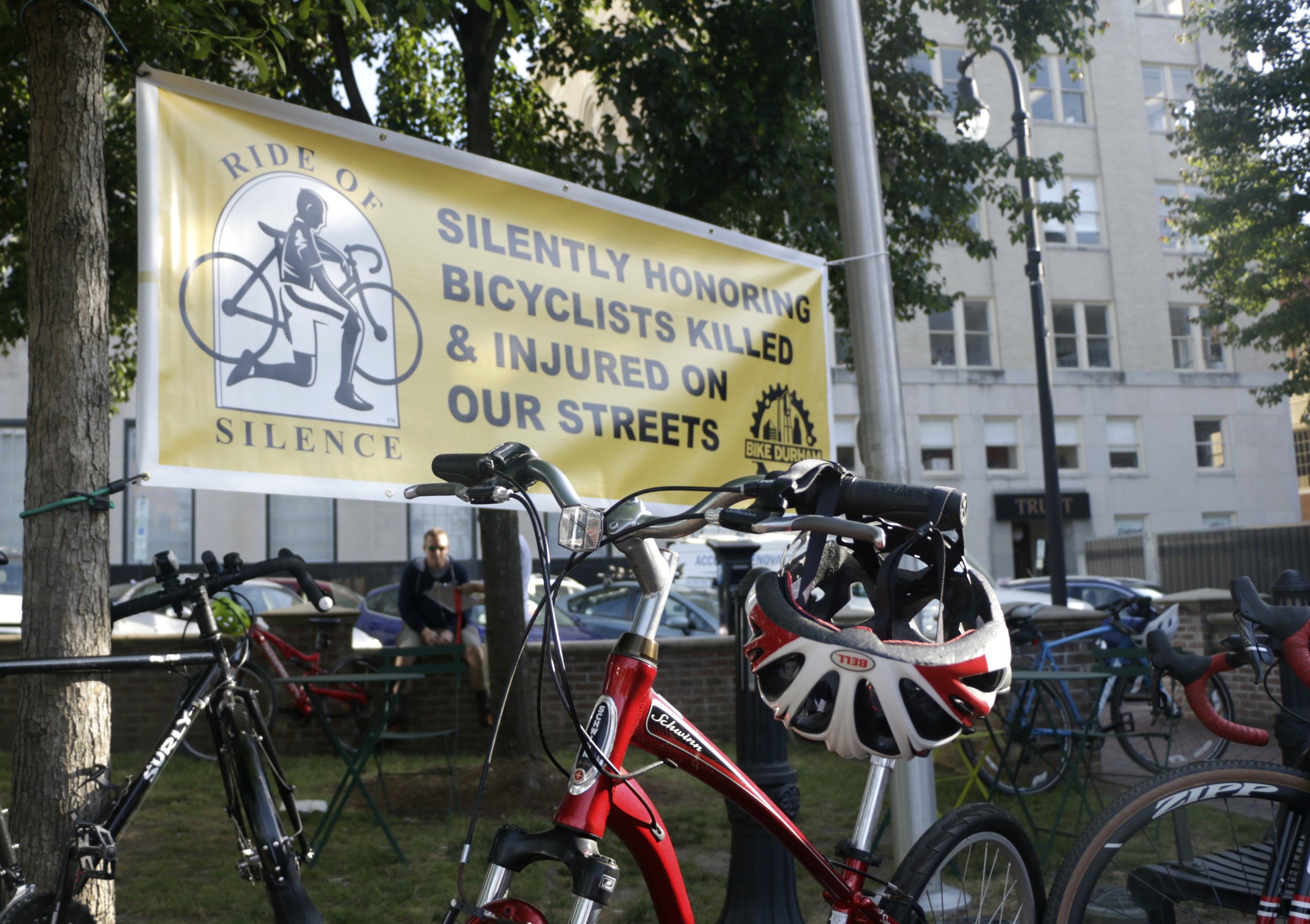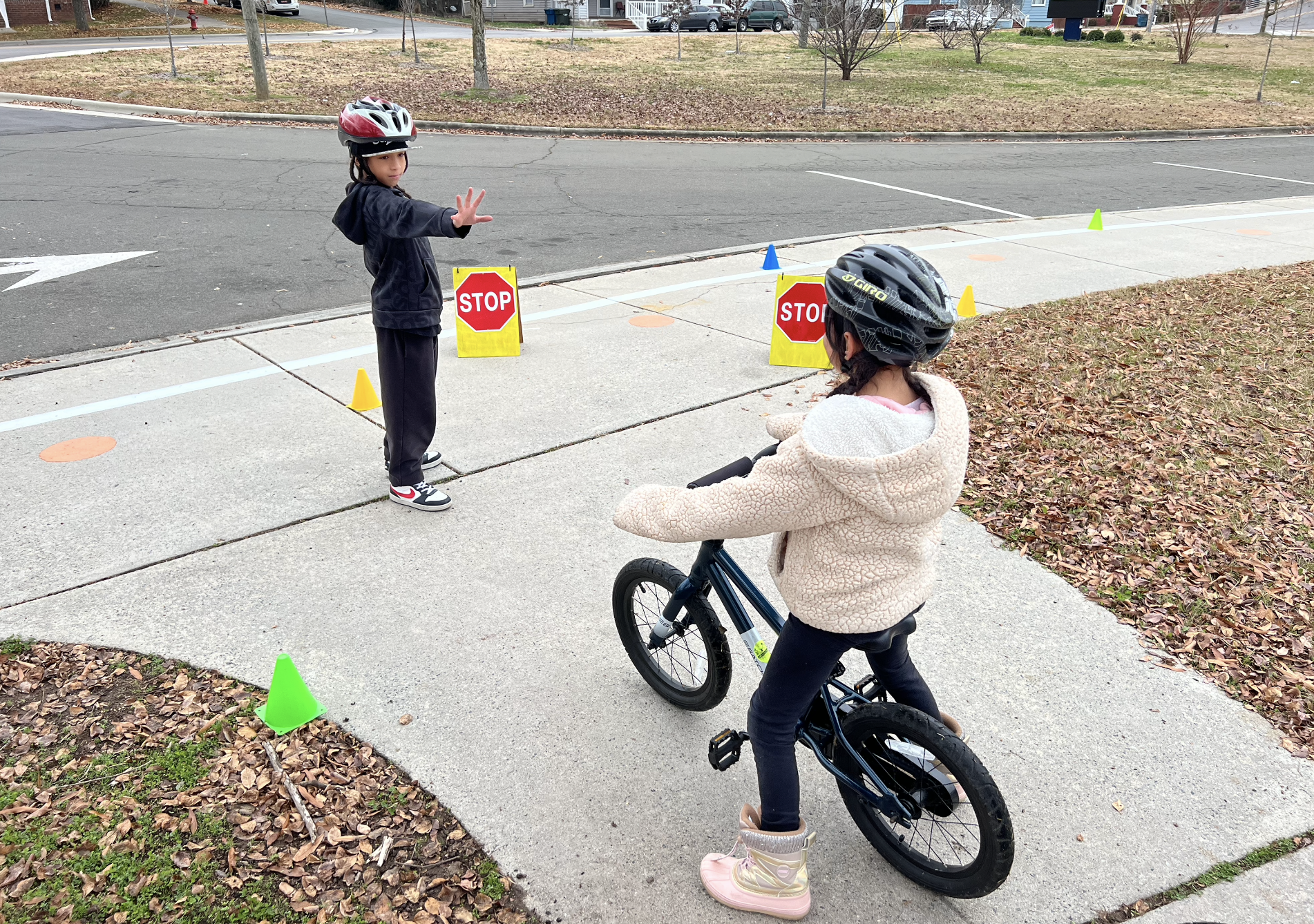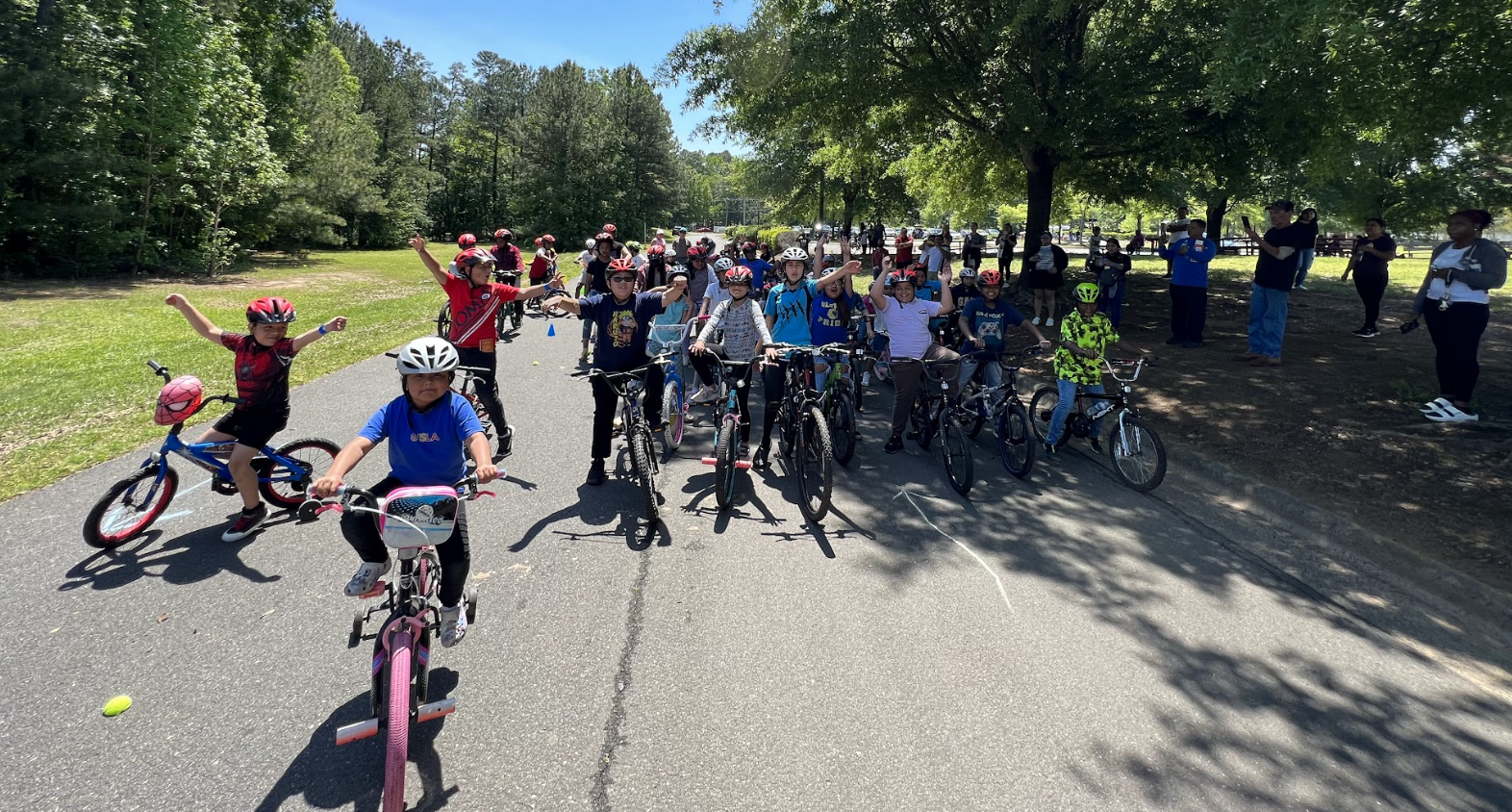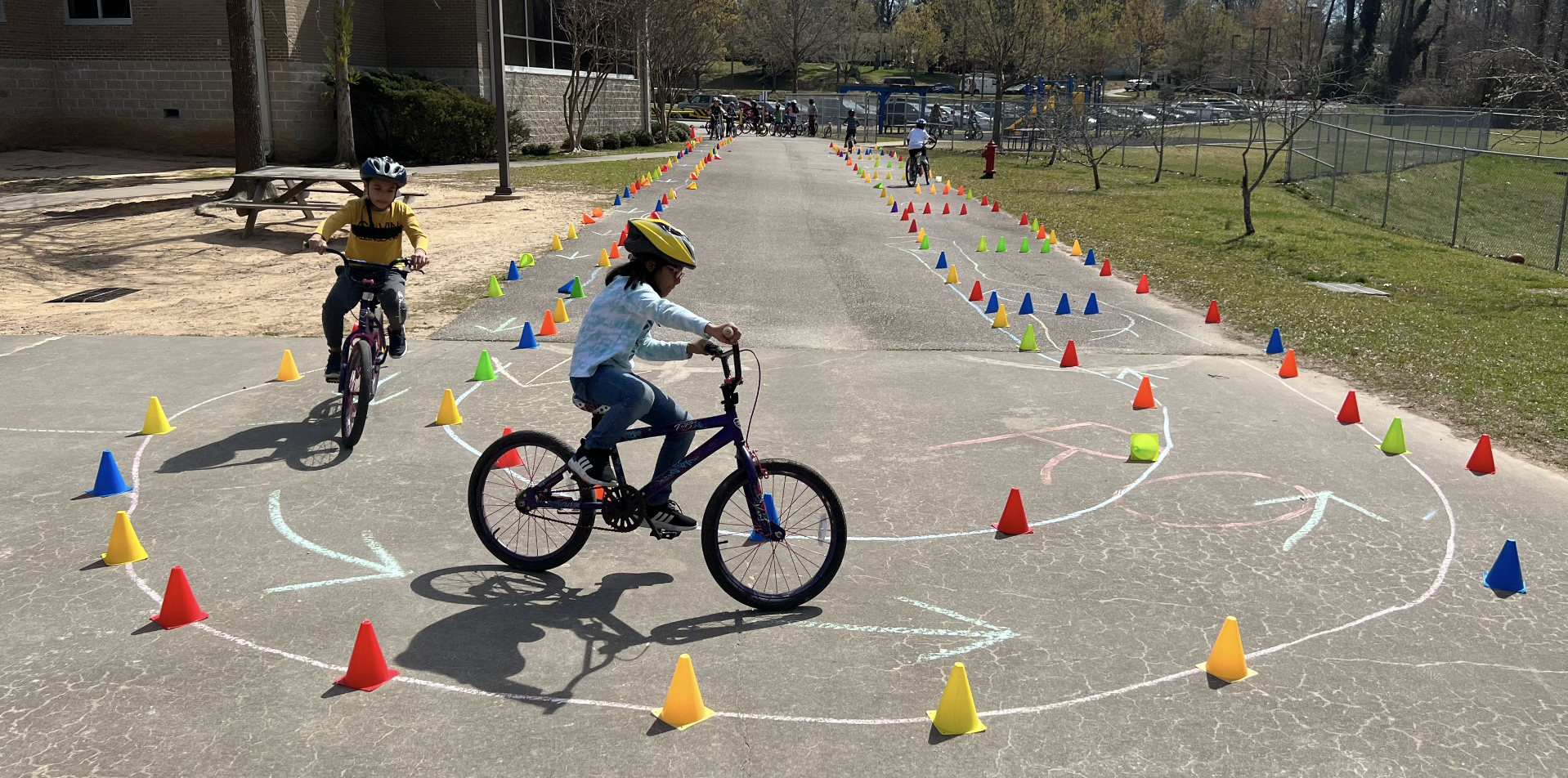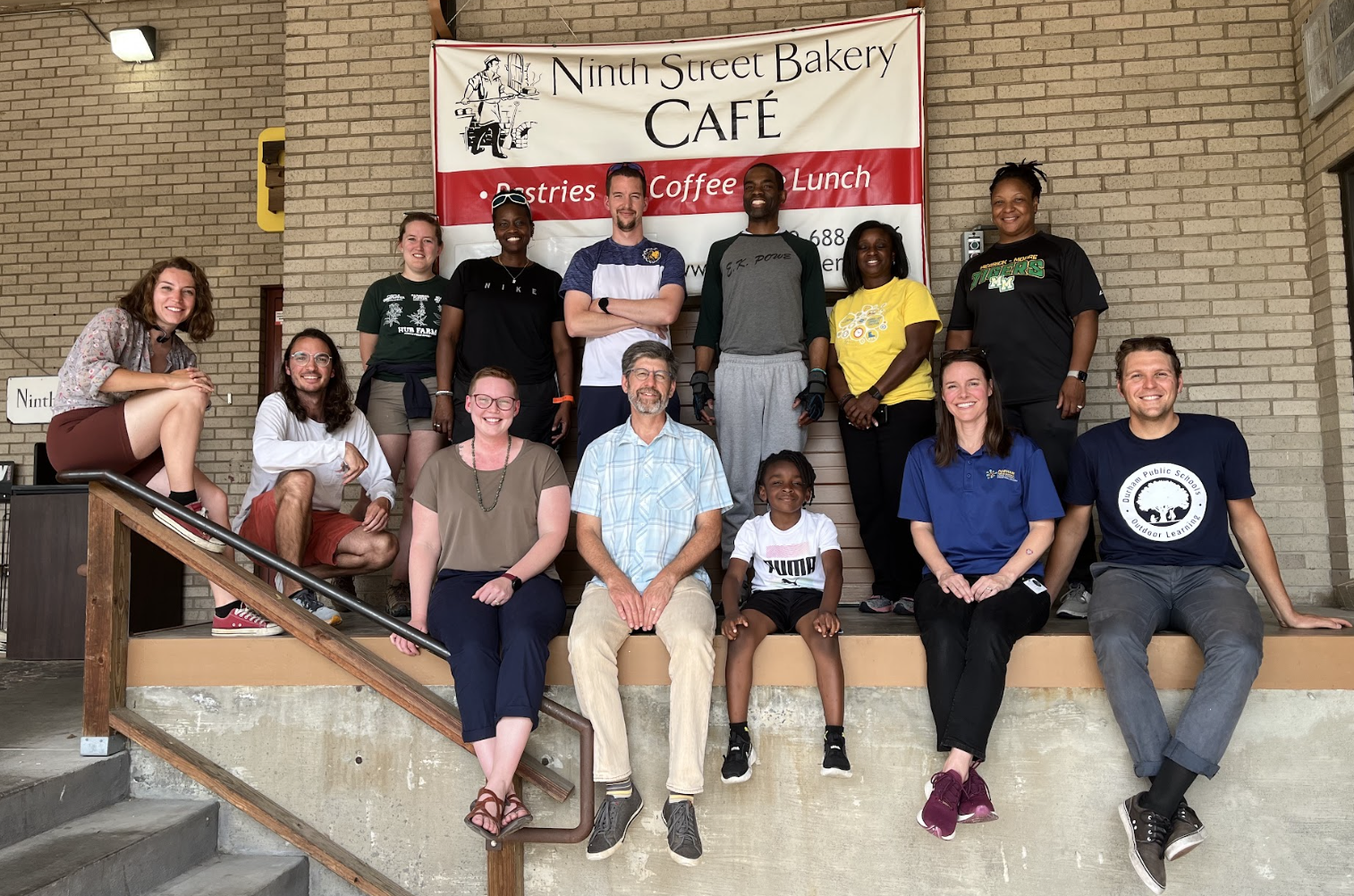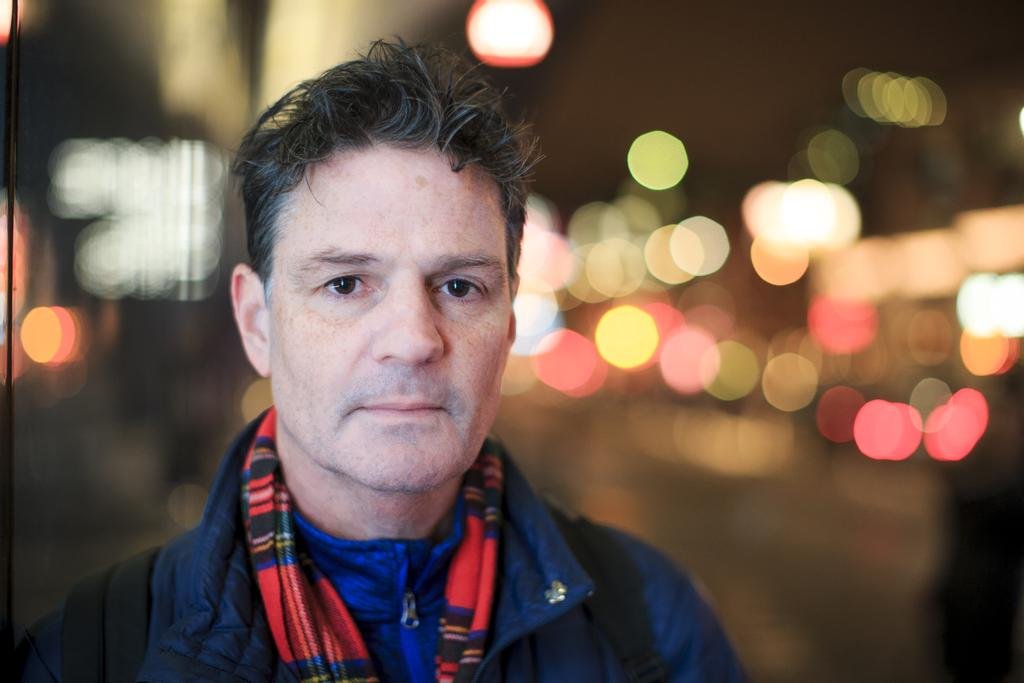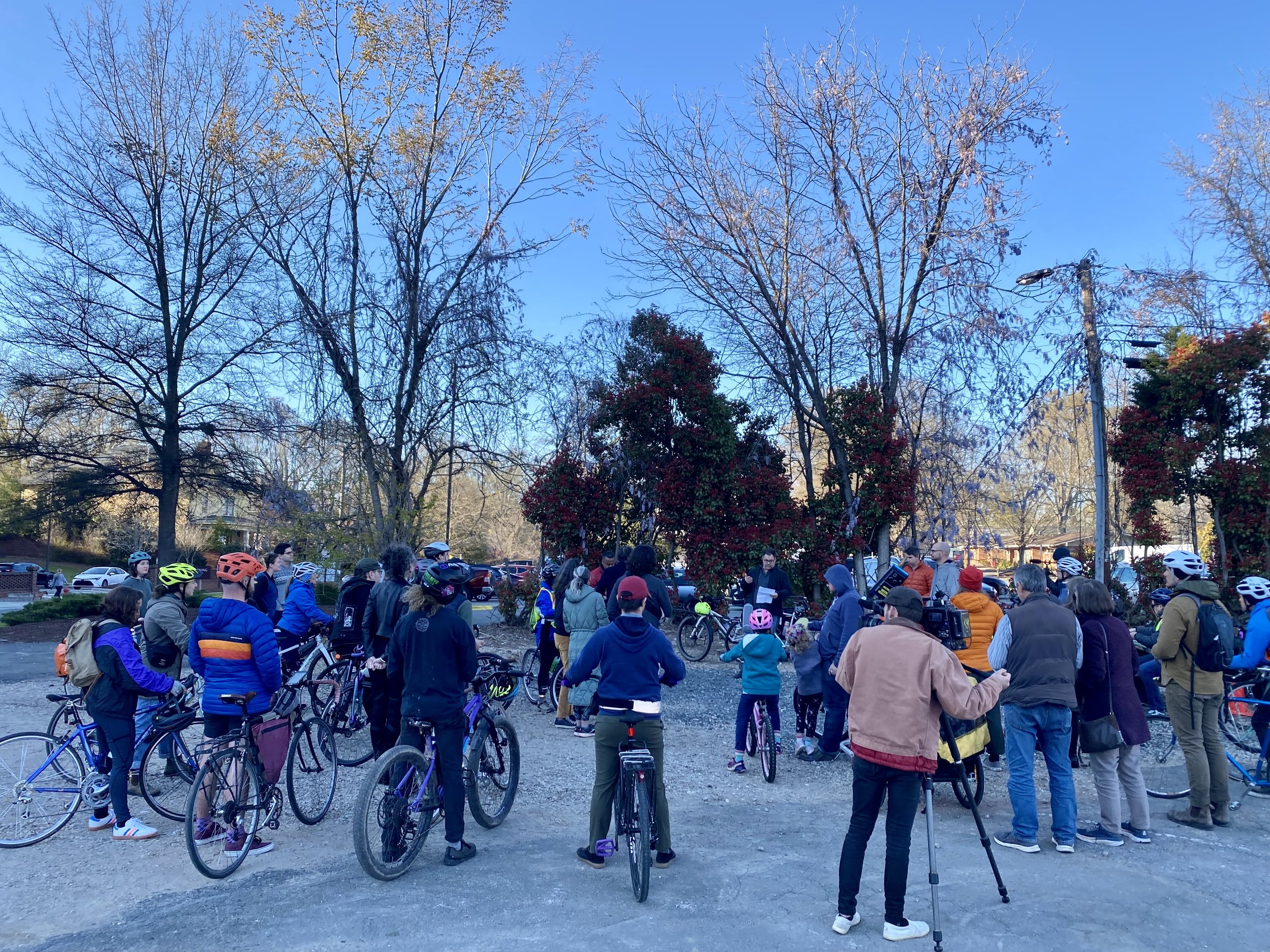EK Powe mom crossing Ninth Street with bicycle
The morning commute for these EK Powe families looks a little different now that a bike train (also called “bike bus”) has been firmly established. Every Wednesday morning, a group of parents and their children meet at the park in their neighborhood and bike together to school. “My kids know that we value physical activity and bike riding to school is another way we can make a lifestyle choice that promotes sustainability,” said EK Powe parent Kyle Simmons.
Photo of EK Powe parents David Bradway and Kyle Simmons with their bicycles and Kyle’s daughter peeking through
Another EK Powe parent, David Bradway, who also co-chairs the Bike Durham Advocacy Committee, partnered with staff at Bike Durham and EK Powe Physical Education Coach Walker in the Fall to include the bike train in the school’s Walk and Roll to School Day. Now David, and his daughter, Amelia, are the first to arrive Wednesday morning, radio on and energy high as they greet the other parents and students.
Pulling out at 7:45am the short ride has them at school in plenty of time for the morning bell. The parents often grab coffee after the drop off, “Bike riding and walking to school together is a way to build community,” said Scotty Mathess, long time bike advocate and EK Powe parent.
Through our Safe Routes to School Bike and Walk Safety programs and support of both the Fall and Spring Walk, Bike and Roll to school events, Bike Durham is implementing a broader strategy to engage parents, and the school community to identify the barriers to increased bicycling and walking and to effectively advocate for change.
In 2022, Bike Durham, with a grant from Duke Doing Good in the Neighborhood, conducted walk audits with the Old West Durham and Watts Hospital-Hillandale neighborhoods in developing a traffic calming plan. Safety issues on 9th street in front of the school were obvious and we recommended strategies to slow traffic and “daylight” the crosswalks.
The community successfully lobbied for infrastructure investment and this Fall the city has used “daylighting” to make the mid-block crosswalk more visible by using posts to block off parking within 20-feet. They have also shortened the crossing distance on Knox Street by closing off a right-turn “slip lane” with new posts. The city and school system are working to install additional bike racks on campus. In addition, the speed in front of the school has been reduced from 35 to 25 matching the speed limit in front of the shops on 9th street. Building on the momentum, Bike Durham recently met with parents to hear other ideas like shutting the street down during drop off and pick up which would increase safety.
Our goal is to replicate this strategy of building relationships through our bike and walk safety classes; bring school-wide, ‘Walk Bike and Roll’ events to more DPS schools to increase awareness around the benefits; identify and partner with parent leaders to conduct safety audits; and lend our support to effectively advocate and realize needed changes.
“Starting with kids getting to and from school is starting with the foundational and basic trip that every individual has taken throughout their childhood and educational career, notes Jacopo Montobbio, Bike Durham Education Program Manager, Safe Routes to School is about putting policies, physical infrastructure, and programs in place to enable families to choose to walk and bike to school, as well as other places, safely.”
Kristen Brookshire, the community transportation planner for DPS, believes that advocating for Safe Routes to School isn't just benefiting the students, but the community in Durham as a whole. “If we’re making it better for kids, it’s going to be better for everyone,” said Brookshire. “It’s going to be better for the parent with a stroller. It’s going to be better for the grandfather with a cane. It’s going to be better for the person trying to get to work.”
Bike Durham will continue to work to deepen partnerships with the 13 schools receiving our bike and walk safety program this school year. We are making strides now to conduct a safety audit at Eastway Elementary. The community around Hope Valley Elementary school held a summer block party with a main topic of conversation focused on how to safely walk and bike to school; they are interested in learning from the leaders of the bike train at EK Powe. Bike Durham serves an integral role in connecting parents and partners to learn from one another and build a network of families advocating for increased investment in bike and pedestrian infrastructure to ensure accessibility and safety for all families in Durham.
If you would like to help lead efforts to increase walking, bicycling and rolling to your school and within your community, please email us at saferoutes@bikedurham.org with the subject line Safe Routes to Schools.



